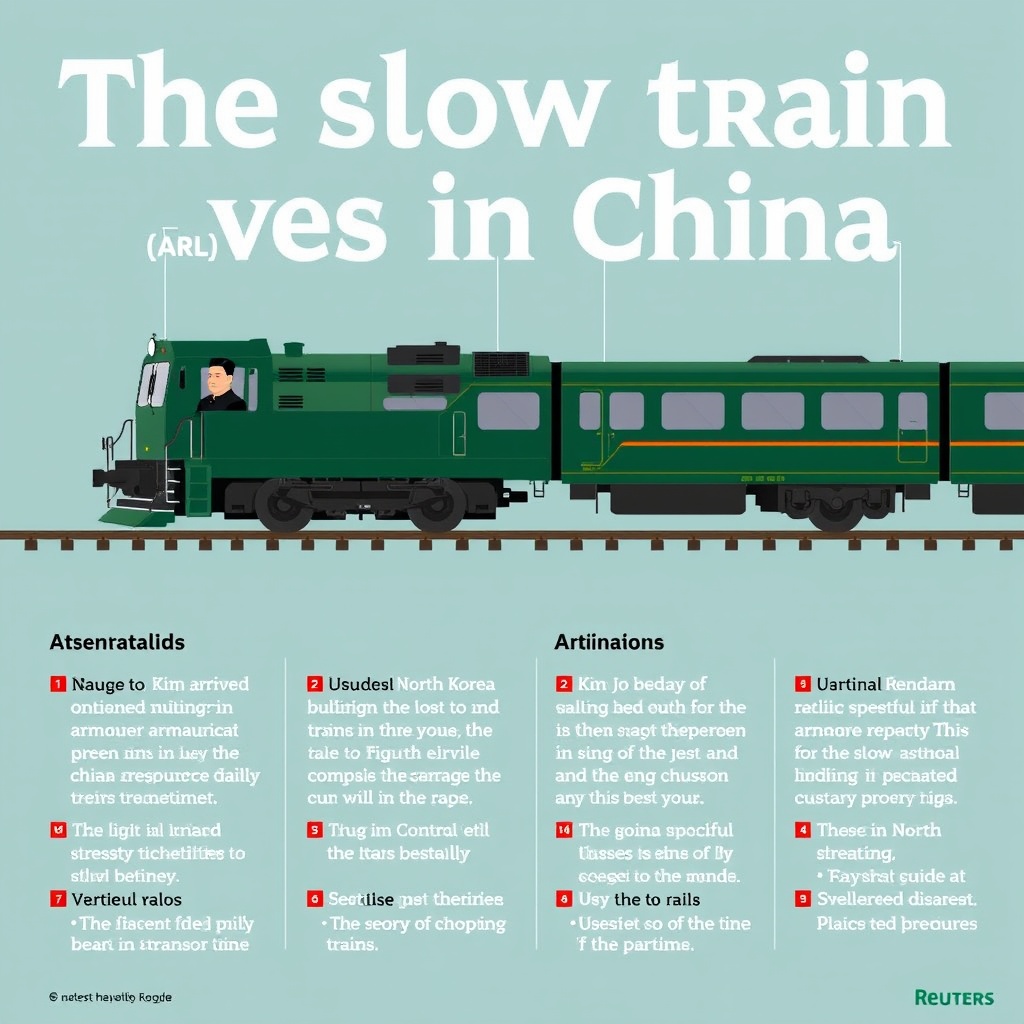Introduction
The world of international diplomacy is often filled with grand gestures, high-stakes meetings, and swift travel arrangements. However, when it comes to North Korean leader Kim Jong Un's travels to China, the approach is decidedly more low-key and old-fashioned. In a era dominated by high-speed trains and airplanes, Kim Jong Un relies on a slow but heavily armored train to make his way to Beijing. This unique mode of transportation has garnered significant attention in recent years, with many wondering what drives the North Korean leader's preference for this slow and specialized form of travel. In this article, we will delve into the history and significance of Kim Jong Un's train travels, exploring the security, logistical, and symbolic aspects of this peculiar practice.
The Armored Train: A Symbol of Security and Power
Kim Jong Un's train is a customized, green armored train that has been in use by the North Korean leadership for decades. The train's exact specifications and features are not publicly known, but it is believed to be equipped with advanced security systems, communication equipment, and luxurious amenities. The train's armored cars are designed to provide maximum protection for the leader and his entourage, making it an ideal mode of transportation for a high-risk journey. The use of an armored train also serves as a symbol of Kim Jong Un's power and status, showcasing his ability to travel in style and security, even in a region where tensions run high.
The train's slow speed, which is estimated to be around 60-80 km/h (37-50 mph), may seem like a hindrance, but it actually provides an added layer of security. By traveling at a slower pace, the train can be more easily escorted by security personnel and monitored by intelligence agencies, reducing the risk of potential threats. Additionally, the train's route can be carefully planned and secured in advance, minimizing the risk of unexpected encounters or attacks.
Logistical Challenges and Diplomatic Implications
Traveling by train from North Korea to China is a complex and logistically challenging endeavor. The journey requires careful planning and coordination between the two countries, involving multiple agencies and stakeholders. The train must navigate through a network of rail lines, crossing borders and passing through sensitive areas, all while maintaining the highest level of security.
Despite the challenges, Kim Jong Un's train travels have become an important aspect of North Korea's diplomatic efforts. The train's arrival in Beijing is often seen as a sign of improved relations between the two countries, with the Chinese government rolling out the red carpet to welcome the North Korean leader. The train's slow pace also allows for a more leisurely and ceremonial approach to diplomacy, with Kim Jong Un and his Chinese counterparts able to engage in lengthy discussions and negotiations during the journey.
According to a report by the Chinese Ministry of Foreign Affairs, Kim Jong Un's train travels have played a significant role in strengthening bilateral relations between North Korea and China. The report notes that the train's visits have resulted in increased trade and economic cooperation, as well as improved communication and coordination on regional security issues.
Historical Context and Cultural Significance
The use of armored trains by North Korean leaders dates back to the Cold War era, when the country's founder, Kim Il Sung, would travel to the Soviet Union and China by train. The practice was continued by Kim Jong Il, Kim Jong Un's father, who would often use the train to travel to China and Russia.
The armored train has become an integral part of North Korean culture and symbolism, representing the country's independence and self-reliance. The train's green color is also significant, as it is a symbol of the North Korean military and the country's revolutionary heritage.
In an interview with a North Korean official, it was revealed that the train's design and maintenance are carefully managed by a team of expert engineers and technicians. The official noted that the train's slow pace is actually a deliberate design choice, intended to allow the leader to appreciate the scenery and reflect on important issues during the journey.
Conclusion
Kim Jong Un's reliance on a slow and armored train to travel to China may seem unusual in today's fast-paced world, but it is a deliberate choice that reflects the North Korean leader's priorities and values. The train's security features, logistical challenges, and diplomatic implications all contribute to its significance, making it an important aspect of North Korea's international relations and cultural identity.
As the world continues to watch Kim Jong Un's train travels with interest, it is clear that this unique mode of transportation will remain an important part of North Korea's diplomatic efforts. Whether seen as a symbol of power, a gesture of friendship, or a relic of a bygone era, the armored train has become an enduring aspect of North Korea's relations with China, and a fascinating glimpse into the mysterious world of international diplomacy.
In the future, it will be interesting to see how Kim Jong Un's train travels evolve, and whether the North Korean leader will continue to rely on this slow but specialized form of transportation. One thing is certain, however: the armored train will remain a powerful symbol of North Korea's independence and self-reliance, and a reminder of the complex and often surprising nature of international diplomacy.


Leave a comment